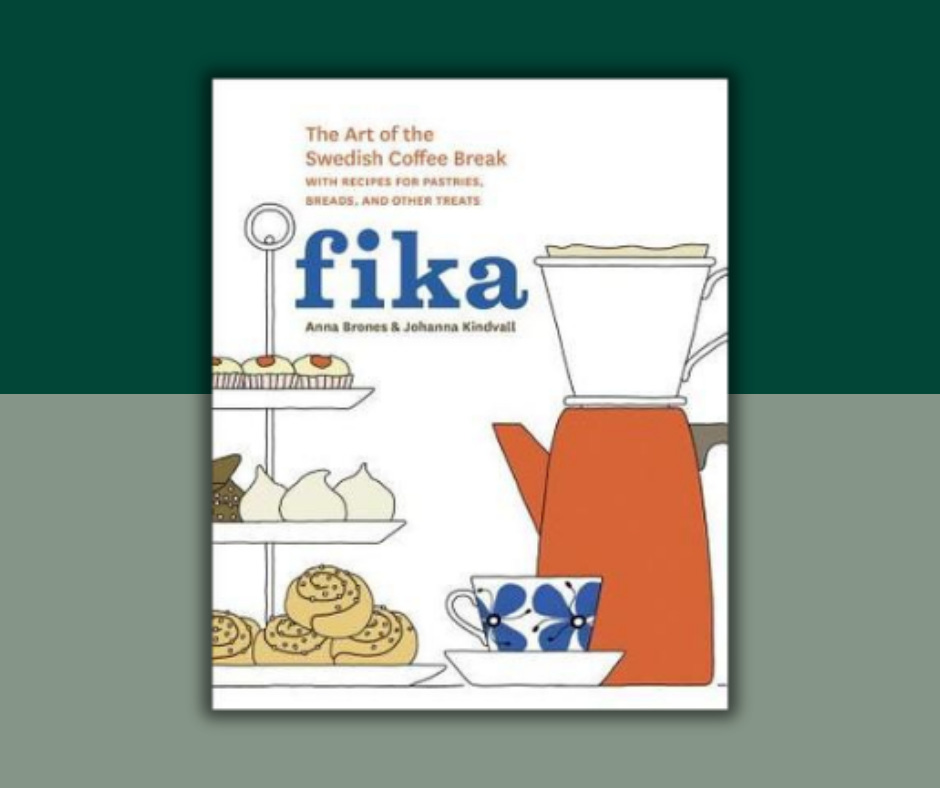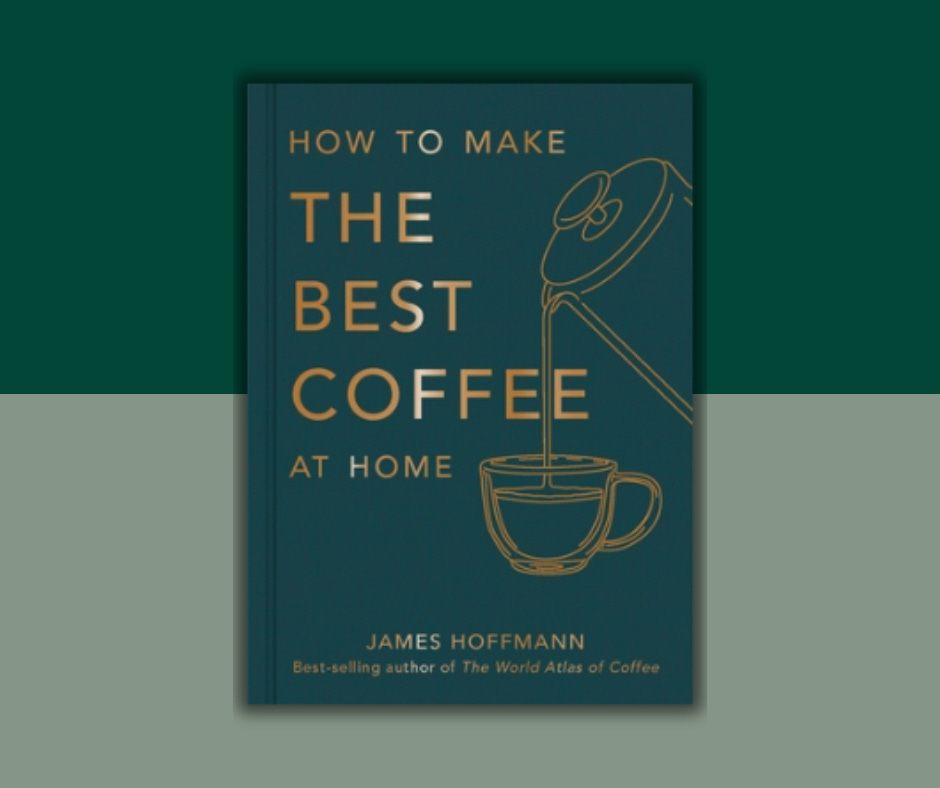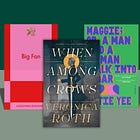for the best reading experience click the post’s title above to open in a new page which allows you to hover over the numbered footnotes to read them alongside the text. its one click. JUST DO IT.
if the rolling ladder is a weekly ritual that brings you amusement or adds a new book to your nightstand then
read! - heart! - share! - comment! - or even buy me a ‘COFFEE’
Coffee was of the upmost important to my family while I was growing up. It was like Jesus, church, coffee.1 My mother must have it upon waking2 and as soon as dinner was done the coffeepot was gurgling to brew our evening cups. We even named one of our dogs Java.3 As a kid I was desperate to join in this ritual but was at first forbidden by my older sister who said, as she clutched a mug to her chest in protection, that it would ‘stunt my growth’. Eventually in my tweens I said ‘growth be damned’4 and joined the cult of this ‘legal addictive stimulant.’
In college I had a tiny 4 cup coffee maker that I adored and would make a pot with a tin of ground Cafe Bustelo beans then doctor it up with creamers stolen from the dining commons. After college I leaned into the ‘third-wave coffee’ culture and now am quite a coffee snob5, only drinking it black and favoring a lighter, single origin roast thank you very much. Most mornings my husband brews our batch of coffee in a Chemex, assisted by a Fellow Kettle and a conical burr grinder6, and I drink it from my Books are Magic mug. If I’m on my own that morning I’ll use the handy little palm press that makes one delicious mugful.7 If we are traveling and good coffee is hard to come by we’ll use the Pakt travel coffee kit or something like these little individual pour over bags. So though I’ve said goodbye to some aspects of my fundamentalist upbringing, coffee was where I really leaned in apparently.
Put on the kettle and let those beans bloom as you find comfort, joy and connection with your cup of joe and one of these.
DRIFT MAGAZINE
This is a magazine, so not a book, but it’s my newsletter so I make the rules. A new issue of Drift Magazine comes out twice a year, in the Spring and Fall, and each issue highlights an entire city’s coffee culture. Past issues cover Miami, Berlin, Paris, Havana, Stockholm, Tokyo and others so if you like coffee and live or are traveling to one of these spots its well worth a buy.
Here coffee serves as a framework for diving into stories of history, heritage and hospitality with write ups, essays, interviews and articles that explore the ingenuity and passion people have for coffee and how that expands into community, creativity and connection. I suppose it could seem a tad precious or suffer from a dash of over-romanticism, but I think its a useful entry point to celebrate and explore the evolution of this ubiquitous beverage in one specific city and how artistic, enterprising and community focused people see coffee as a way to express craft, artistry and kinship. Grounded in personal stories, this is an aspirational and soothing reading experience and its very fun to spy on the varietals of cafes and coffeeshops around the world — from the lowbrow, graffitied and well worn to the bright, pristine and minimalist along with all the inventive business combinations like cafe/bookshop or cafe/bike shop or cafe/plant shop. The magazine ends with an at-a-glance page that lists out all the spots they highlighted in the issue and their addresses for ease of visiting.
Coffee sits in the background of some of the most important moments in our lives: the first time we told new friends we’d like to get to know them better, a second date, a business meeting, a passion project completed, a time we caught up with long-lost loved ones after years apart. More than anything else, coffee is tied to a sense of place and a sense of community.
Drift is about coffee, the people who drink it, and the cities they inhabit. Our collection of writers and photographers, alongside coffee shop owners, baristas, streetcart vendors, and patrons, capture a glimpse of what it’s like to drink coffee in a city at the time the magazine is printed. It’s about wandering the streets aimlessly, cup of coffee in hand, and learning more about what a place has to offer, whether you’ve been there for 25 minutes or 25 years. Coffee helps us chart the geography of our cities. It’s about seeing those cities with fresh eyes, as visitors or long-time residents, and trying to understand what makes them tick.
FIKA by Anna Brones & Johanna Kindvall
This adorable little book was a favorite of ours at the cookbook store where I used to work. The staff would always pronounce its name with a little squeal, “fika!”, because everything about it was just too darling to contain our glee. Its compact size and focus on connection made it very gifty so we recommended it to customers often. ‘Fika’ is a Swedish concept all about taking time out in one’s day to enjoy a coffee, a treat, and often, a friend.
In Sweden the tradition of fika is as common as breakfast; something almost everyone does at least once a day. It factors into travel planning, work schedules, and even a relaxed weekend at home. Life without fika in unthinkable. Functioning as both a verb and a noun, the concept of fika is simple. It is the moment that you take a break, often with a cup of coffee, but alternatively with tea and find a baked good to pair it with. … the essential thing is that you do it, that you make time to take a break: that’s what fika is all about.
I love that this word is used as a verb and a noun, and that fika can be ‘done anytime, anywhere and with everyone’ to ‘appreciate slow living’. Having a specific term for such a thing legitimizes it, making it a recognizable, purposeful and identifiable activity. Scandinavian cultures are doing something so right with their official wordings around concepts of simple, cozy, intentional living that prioritize everyday pleasures of the senses, connection and community. Like the word ‘mysig’8!
Bursting with cheerful illustrations, this cookbook explores the idea of fika, the history of Swedish coffee and its place in the culture and includes a pantry section which lists Swedish ingredients and alternatives along with tools and methods. The sections are divided by Modern Day Fika, Outdoor Season, Celebrating the Every Day, and Bread Sandwiches and Fika as a Snack with each containing recipes that include both weight9 and volume measurements and the book concludes with a list of resources that sell hard to find ingredients. This is a charming delight of a book that is handy practically and conceptually — let us all fika whenever possible.
Some recipes of note
vetebullar - cinnamon and cardamom buns
syltgrottor10 - jam thumbprint cookies
muskotsnittar - nutmeg slices
kärleksmums- chocolate coffee squares
kokostoppar - coconut peaks
ingefärsmaränger - ginger meringues
lussekatter - saffron buns
kumminskorpor - caraway crisps
Swedish words inspired by fika because they are just too damn endearing
fikastund - the moment you have fika
fikaställe - a place to have fika
fikasugen - to have a fika craving
At its core, fika means "to drink coffee." But the meaning goes much deeper. Fika represents an entire culture; it carries as much meaning for Swedish social engagements as it does for food customs. Fika is as indicative of a love of coffee as it is of a belief in maintaining tradition.
…
That's why fika is special; it fits into so many moments and seasons. You select what you eat for fika depending on what atmosphere you're trying to create: one dish is perfect to celebrate a birthday, another might be better simply to have with afternoon coffee by yourself. After all, fika is just as good a reason for catching up with an old friend as it is for hosting a Christmas party. Fika can be done anytime, anywhere, and with anyone.
HOW TO MAKE THE BEST COFFEE AT HOME by James Hoffman
Written by YouTuber and real life Pixar character James Hoffman, this book is a ‘choose your own adventure’ depending on just how nerdy you want to get about your home brew. It has chapters on how to buy, taste and brew along with an excessive amount of information about the ‘essentials’ needed to make coffee at home. Hoffman instructs coffee enthusiasts about freshness, storage, roast level, processing, varietals and flavor notes before getting real sciencey about water quality and temperature, scales, grind size and tasting notes. The most useful section is ‘How To Get The Best From Your Brewer” which goes through 10 different brew methods like the Chemex, French Press, Clever Dripper and Moka Pot. Choose the one that you use and find out how to wrest the best drink you can from it with step by step photos, instructions, advice and troubleshooting. Finally there’s a whole section on cold brewing, espresso machines and drink creation with more info than you can possibly need but perhaps you want.
Hoffman takes this topic seriously and intentionally but tells readers that the goal is fun and enjoyment not pretension. I also appreciated his few notes on traceability, price point and some of the bigger factors that go into our cup of coffee. Brimming with blandly pretty photos of steaming coffee being poured out of various carafes into various mugs, this book can be a bit much but also very informative! One of those skimmable books11 that has something useful and/or interesting on every page to most people. Even if you incorporate just a few notes and tidbits this will level up your coffee game and if coffee is something you have every single day12 then you should make every cup as delicious as possible. You probably do this with most of your cooking and baking so why not with drinking? This can also be a real gifty sort of book for the coffee snob in your life, though it may make them an even bigger snob so proceed at your own risk.
It will come as no surprise that I think coffee is undervalued; it is a fascinating beverage that not only is delicious and diverse but also psychoactive and stimulating. It is something I encourage you to invest in if you can.
Having a bag of coffee at home is normal for hundreds of millions of households. It is, if you stop and think about it for a second, astonishing that it is possible. You have the seeds of a tropical plant, grown thousands of miles away, that have been harvested, processed, sorted, exported, roasted, packaged and delivered to your door for a very small cost. This sets the expectation early on that coffee should be cheap, and sadly some coffee will probably always be inexpensive. But cheap coffee comes at a very human cost - someone must struggle for your coffee to be low priced; someone must live a life of food insecurity or inescapable debt. Cheap coffee is nothing to celebrate, now or ever.
Did you know I do more than read and tell you what to read? I also edit podcasts and fiction. If you’ve got an audio project that needs a skilled ear or a fiction manuscript that needs a detailed eye, send me a message, or leave me a comment.
how do you brew your coffee?
do you have a daily coffee ritual?
have any coffee themed books to add to this shelf?
am i joking? not sure.
regular drip coffee with half and half. NO milk. it must be half and half.
this was a husky that eventually escaped our clutches, preferring to run away to the mental institution down the road
i do not drink starbucks and have not been within 12 feet of a ‘pumpkin spice latte’
thank you to my brother in law G for this gift. (though he doesn’t read this newsletter which is his loss)
“loosely translates to ‘cozy’ but the meaning is larger: a warm kitchen to welcome you inside after you’ve been out in the winter snow; Friday night curled up on the couch with a cup of tea; a cute cafe with big cups of coffee and oversize chairs. The goal is to create a moment that’s mysig and, so often, mysig and fika go hand in hand.”
a MUST in baking
translation: jam caves!
maybe for your coffee table?
maybe even multiple times a day












Your intros always give me such childhood nostalgia!
Unbelievable !!
No mention of Vietnam which, you must admit , blew our minds on how to coffee on another level !!!!